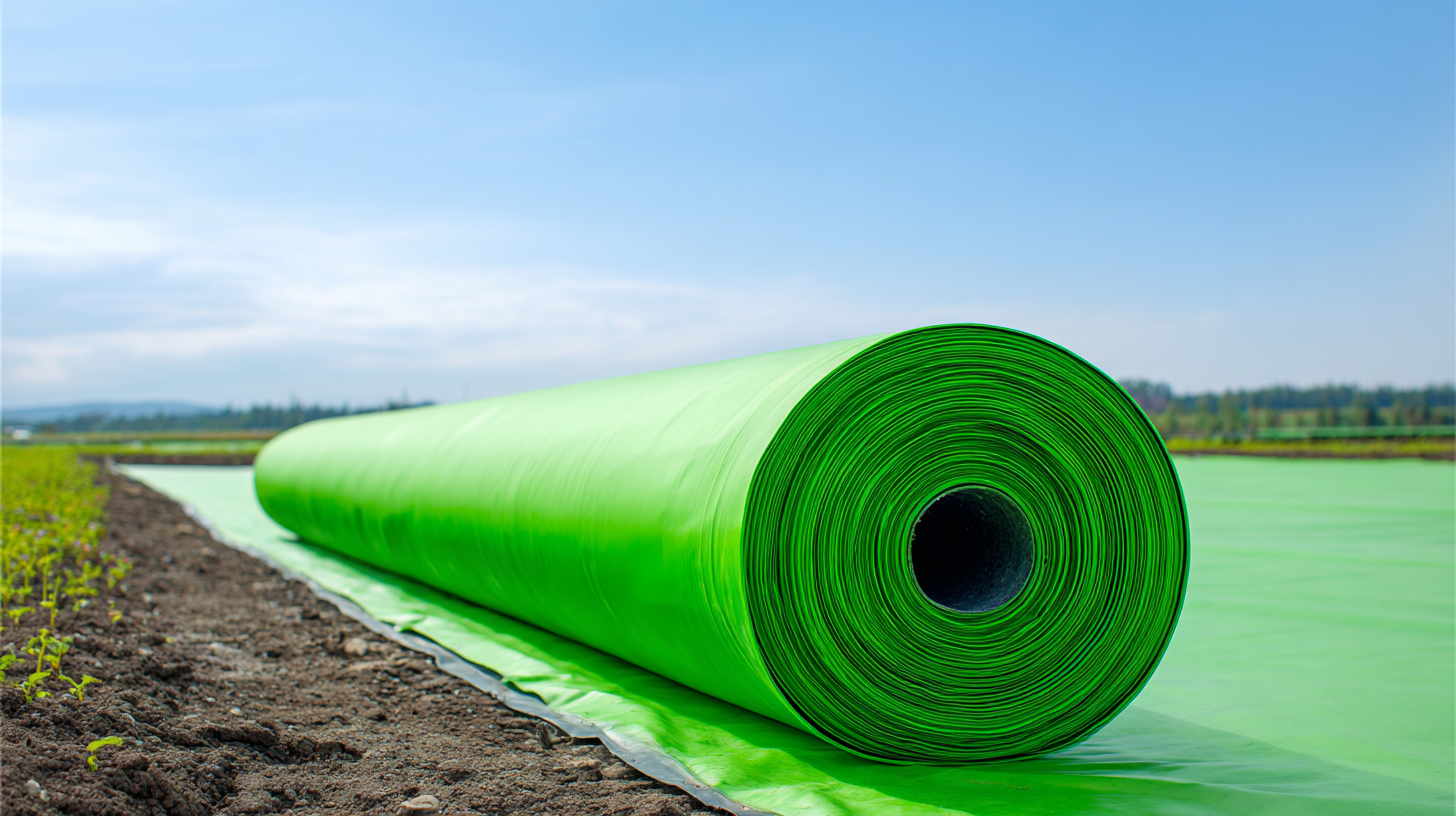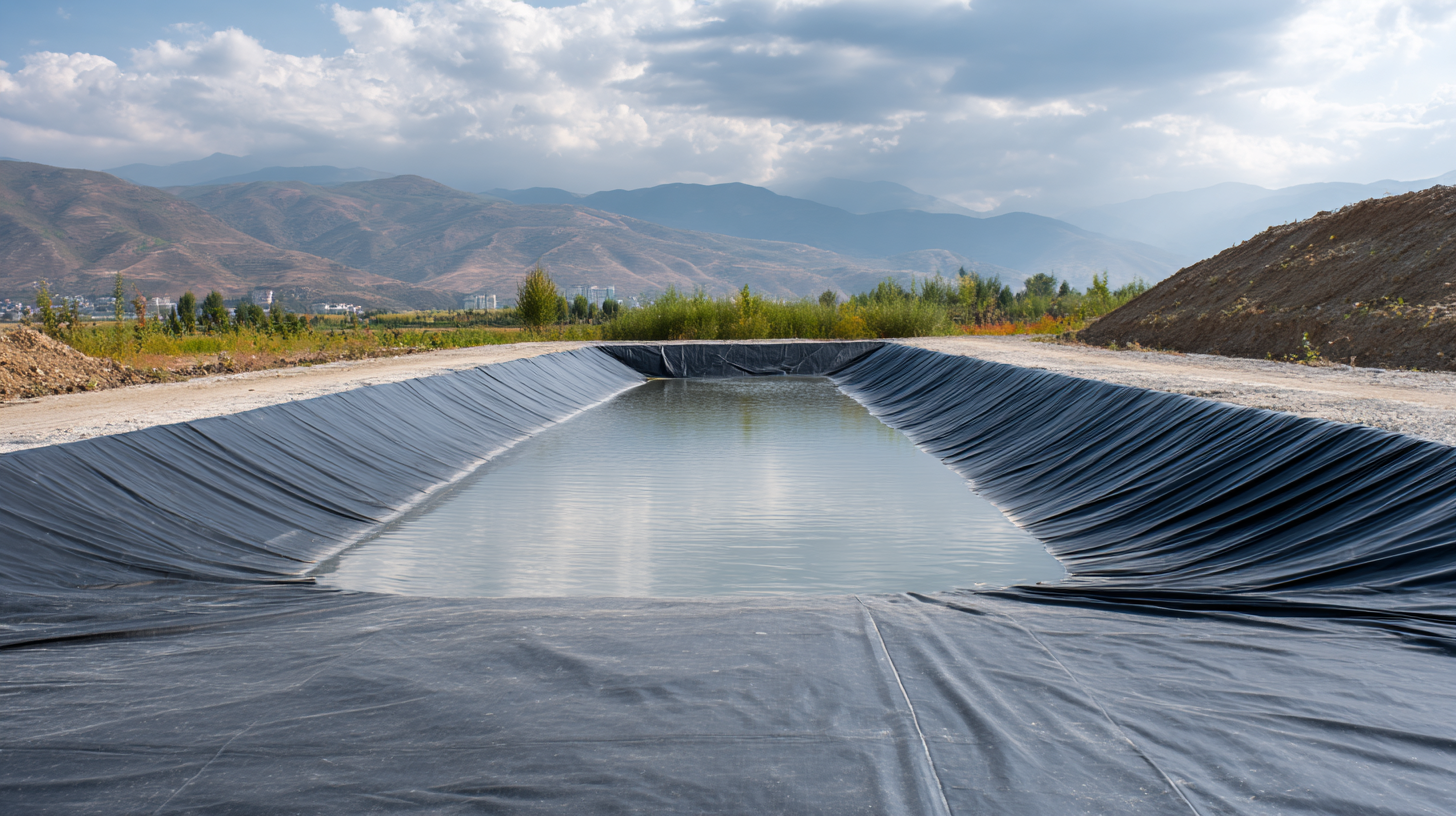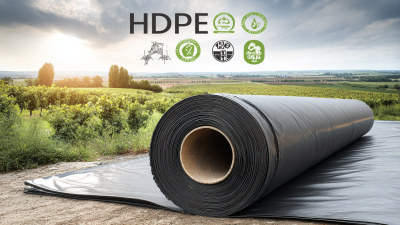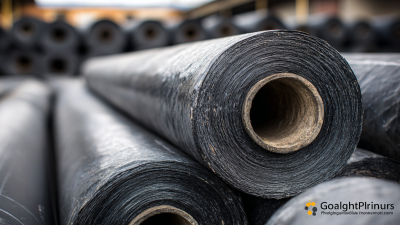Inquiry
Form loading...
- Phone
- E-mail
Geomembrane liners play a crucial role in environmental protection, serving as an effective barrier against contaminants in various applications, including landfills, mining, and water management. According to the Global Geomembrane Market Report 2023, the demand for geomembrane liners is projected to grow significantly, driven by increasing awareness of environmental sustainability and stringent regulations regarding waste management. These liners not only prevent soil and groundwater contamination but also provide excellent durability and flexibility, making them suitable for diverse environmental conditions. As industries continue to focus on eco-friendly practices and compliance with environmental regulations, the integration of geomembrane liners is expected to become more prevalent, ultimately contributing to more sustainable practices and reduced ecological impact. This article explores the diverse benefits and applications of geomembrane liners, highlighting their importance in safeguarding environmental integrity.

Geomembrane liners, particularly those made from high-density polyethylene (HDPE), play a crucial role in environmental protection by offering robust barriers against leachate and contaminants. These liners are essential in applications such as landfills, mine tailings storage, and wastewater treatment facilities. According to industry reports, the global geomembrane market is projected to grow significantly, driven by increasing environmental regulations and the need for sustainable waste management solutions. The durability of HDPE geomembranes, with a resistance to UV exposure and harsh chemicals, makes them a preferred choice for these applications.
Tips: When selecting geomembrane liners, it's vital to consider the specific environmental conditions and the nature of the materials they will be protecting against. Testing for proper thickness and composition can ensure optimal performance and longevity. Additionally, regular inspections and maintenance can help in identifying potential wear and tear, prolonging the life of the liner.
The composition of geomembrane liners often includes additives that enhance their performance. For instance, high-quality products may feature modifiers that increase flexibility and resistance to cracking. Recent studies have also aimed at assessing the impact of geomembrane liners on microplastic concentrations in leachate, emphasizing the need for advancements in material design to mitigate environmental concerns. Thus, ongoing research and development in geomembrane technology are vital for improving both functionality and environmental compliance.
Geomembrane technology plays a crucial role in addressing various environmental challenges, particularly in waste management and water conservation. One major application is in landfill linings, where geomembranes serve as barriers to prevent leachate from contaminating the surrounding soil and groundwater. This is essential in minimizing environmental hazards posed by hazardous waste, ensuring that the ecosystem remains protected from toxic substances. Moreover, geomembranes are increasingly utilized in stormwater management systems, acting as effective liners for retention and detention basins, which helps reduce flood risks and manage runoff pollution.

Tips: When selecting geomembrane materials, consider factors such as permeability, durability, and compatibility with the specific environmental conditions of your project site. Additionally, always ensure that the installation is performed by experienced professionals to maximize efficacy and minimize defects.
Another significant challenge that geomembrane technology addresses is erosion control. In areas prone to soil erosion, geomembranes can be used to stabilize slopes and prevent sediment loss. This application is particularly beneficial in the construction and mining industries, where landscapes are frequently disturbed. The use of geomembranes not only protects natural habitats but also enhances the sustainability of infrastructure projects.
Tips: Regular maintenance and inspections are essential for long-lasting geomembrane systems. Check for any signs of damage or degradation to ensure that they remain effective in protecting the environment.
 The cost-effectiveness of installing geomembrane liners is a critical consideration for environmental protection projects. Geomembranes offer a robust barrier against contaminants, which helps prevent soil and groundwater pollution. When assessing the total cost of installing these liners, factors such as material selection, installation processes, and the long-term benefits of pollution mitigation must be carefully weighed. The upfront costs may seem significant; however, the potential savings from avoided environmental damage and remediation expenses are invaluable.
The cost-effectiveness of installing geomembrane liners is a critical consideration for environmental protection projects. Geomembranes offer a robust barrier against contaminants, which helps prevent soil and groundwater pollution. When assessing the total cost of installing these liners, factors such as material selection, installation processes, and the long-term benefits of pollution mitigation must be carefully weighed. The upfront costs may seem significant; however, the potential savings from avoided environmental damage and remediation expenses are invaluable.
Furthermore, the application of geomembrane liners in various fields, including waste management and mining, presents additional economic advantages. By minimizing leakage and facilitating efficient waste containment, these liners enhance operational efficiency and compliance with environmental regulations. As organizations face increasing pressure to adhere to sustainability standards, investing in geomembrane technology can lead to both ecological benefits and financial savings. Over time, the initial investment in geomembranes can be offset by reduced liability costs and improved site sustainability, making them a cost-effective choice for long-term environmental stewardship.
Geomembrane liners have become an essential component in waste management, offering a reliable solution for containing hazardous materials and preventing leachate migration. These flexible, impermeable membranes serve as barriers in landfills, ensuring that potentially harmful substances do not contaminate surrounding soil and groundwater. By effectively isolating waste, geomembranes protect the environment and public health, making them a critical tool in modern waste management systems.
In addition to their use in landfills, geomembrane liners are utilized in various applications, such as wastewater treatment facilities and storage ponds for industrial waste. Their durability and resistance to chemical degradation make them suitable for industries that handle corrosive materials. Moreover, geomembranes contribute to resource conservation by facilitating the collection of leachate, which can be treated and reused. The integration of these liners into waste management practices not only enhances environmental protection but also promotes sustainable resource use, making geomembranes a vital element in addressing contemporary waste challenges.
| Application Area | Benefits | Material Type | Thickness (mm) | Durability (Years) |
|---|---|---|---|---|
| Landfill Lining | Prevents leachate migration, protects groundwater | HDPE (High-Density Polyethylene) | 2.5 | 30+ |
| Water Reservoirs | Minimizes evaporation and water loss | LDPE (Low-Density Polyethylene) | 1.5 | 20+ |
| Mining Projects | Controls acid mine drainage, protects surface water | PVC (Poly Vinyl Chloride) | 2.0 | 25+ |
| Agricultural Applications | Soil erosion control, moisture retention | EPDM (Ethylene Propylene Diene Monomer) | 1.0 | 15+ |
| Stormwater Management | Reduces runoff, prevents contamination | TPO (Thermoplastic Olefin) | 1.5 | 20+ |
Maintaining and monitoring geomembrane systems is crucial for ensuring their effectiveness in environmental protection applications. Regular inspections are essential to detect potential issues such as punctures, tears, or chemical degradation. According to a report by the Geosynthetic Research Institute, approximately 90% of geomembrane failures stem from lack of proper maintenance and monitoring. Implementing routine visual assessments and utilizing advanced technologies like infrared thermography can help identify weaknesses before failures occur.
Additionally, keeping accurate records of installation and maintenance activities is vital for the longevity of geomembrane liners. A study published in the Journal of Environmental Engineering highlights that consistent monitoring can extend the lifespan of these systems by up to 30%. Employing techniques such as pressure testing and hydrostatic testing allows for early detection of leaks, which can prevent significant environmental damage and costly remediation efforts. By adhering to best practices for maintenance and monitoring, operators can enhance the performance of geomembrane systems and secure their role in sustainable environmental management.






